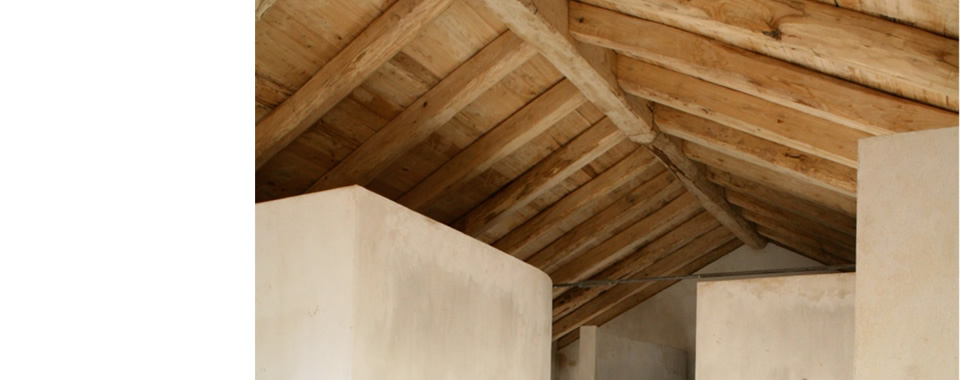

Score - Sustainable Construction in Rural and Fragile Areas for Energy efficiency
Guidelines for Integrated territorial Planning:
Involucre (insulation, mass, PCM)
The following guidelines come from a deep analysis of case studies, innovative products, norms and regulations, in relation to the local level. This analysis is summarized in a card that can be downloaded in Greek.
A building's heating and cooling cycles during the winter and summer periods require great amounts of energy annually. In many cases the energy consumption attributed to these temperatures tuning cycles count for over 70% of the total annual energy consumption of the building. This energy is produced mainly from electricity or fossil fuel burning methods that are far from sustainable and cause CO2 and other GHG emissions.
Insulation of a building (facades, inside the walls, roofs e.t.c.) can lead to the reduction of the required energy as less thermal energy is exchanged between the building and the environment.
To insulate a building several combinations of materials are used (most of the times layered composite materials) depending on the application, the morphology of the building, and the weather conditions in the area (wind, minimum and maximum temperature and temperature variations, humidity etc.) to name a few.
Research has been conducted for new advanced materials and insulation solutions that can be applied are or will available to the insulation professional technicians to be applied to a broad range of applications. Insulating systems in combination with overall environmental awareness by the people who inhabit the building can significantly reduce the building's total CO2 footprint.
The process of insulation has to be implemented by experimented technicians and always use appropriate materials according to the weather conditions and the use of the building, in order to have the desired results.
Indication for the Bio-construction Action Plan
Pursuant to the guidelines written above, are here synthetically reported the criteria/examples for pilot projects to be financed in MED territory, in relation with the specific treated theme. These criteria/examples, together with the ones resulting from all the themes of eco-construction tool matrix, will make up a Bio-construction Action Plan for each partner’s country.
- Projects aiming at collecting all the available materials and insulating processes that could be applied depending on the special needs of each building. In addition, this platform could operate as a means of communication between technicians for exchange of experiences.
- Implementation of a database that will aim at presenting all the construction materials that are labeled and promote sustainability in building sector as well as at informing stakeholders regarding the existing regulations and guidelines.
Possible criteria for MED bio–housing quality certificate
The “Regulation for Buildings Energy Performance” (KENAK) that constitutes the normative regulations for the implementation of Law 3661/08 according to the Directive 2002/91 EC, insulation is mentioned in several section, but only as reference. The Technical Chamber of Greece (TEE), implemented a guide entitled “Bioclimatic Design of Building” based on the principal guidelines of “KENAK” in which over 100 scientists were engaged in order to determine the guidelines and the techniques that must be followed as far an energy efficient and bioclimatic buildings are concerned. The technical guide of TEE dedicates several sections to a description of insulating processes, thermal protection and different types of insulation, proving the importance of this intervention in the protection of the building’s envelope.
Case studies
Bioclimatic houses in Kefalonia
Bioclimatic houses in Rhodes
